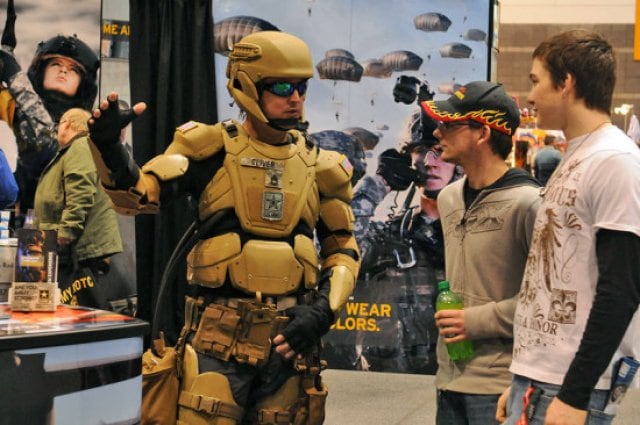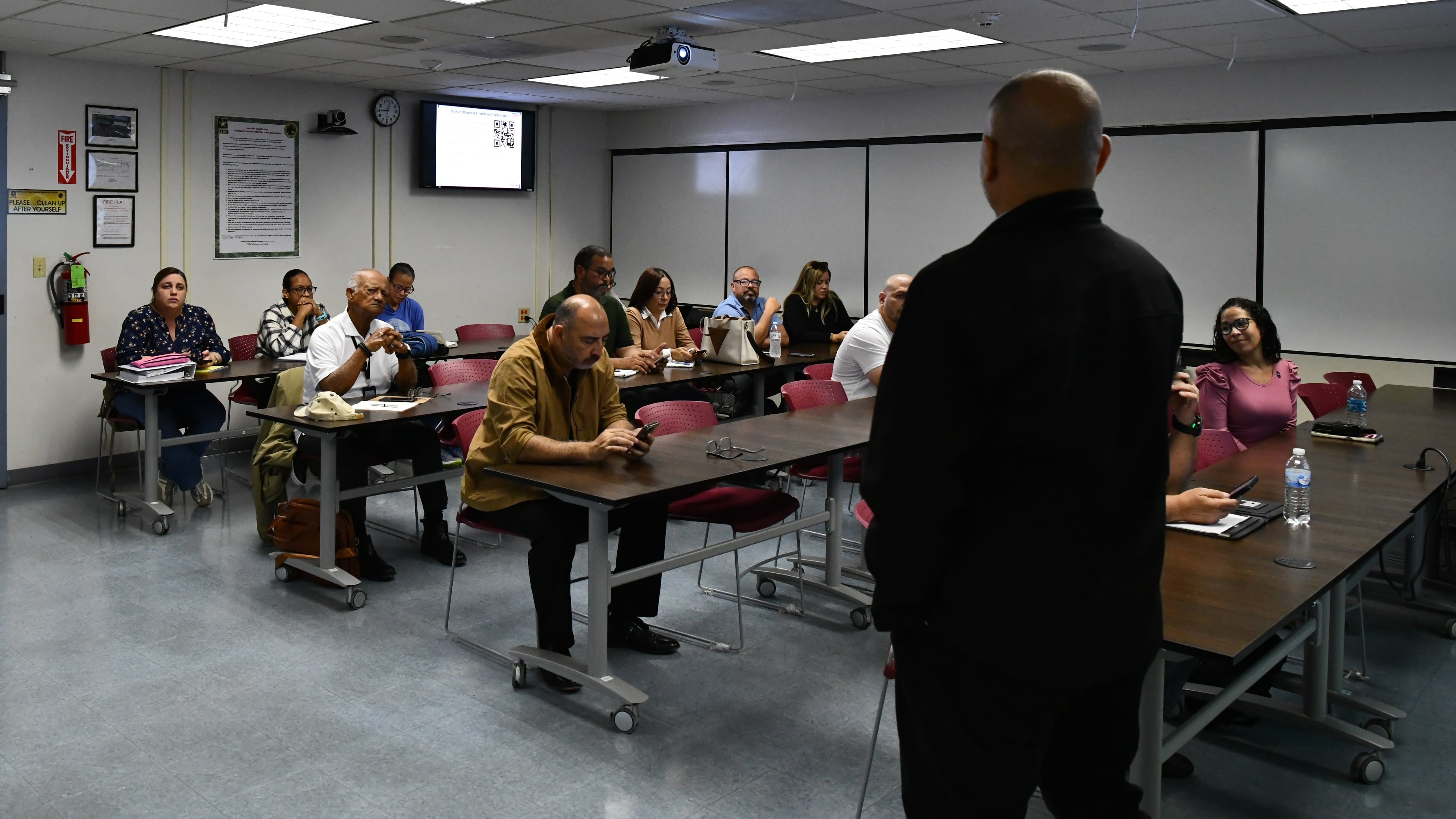Soldiers with the 10th Mountain Division will be the first to test the long-awaited exoskeleton that developers say can reduce injuries, carrying loads and help troops move around the battlefield with ease.
The U.S. Army Natick Soldier Research, Development and Engineering Center partnered with the division in February to identify, evaluate and transition exoskeleton technology to the Army.
NSRDEC has led exoskeleton efforts for the Army for a number of years. One of the more advanced products that will soon hit the division is made by Lockheed Martin.
Army Times spoke recently with company officials about the ONYX device, which will go through phases of testing, beginning as early as this fall.
The first phase will include a six-month “development effort” in which researchers work on “quality of life” portions of making the knee- and hip-focused device fit comfortably and correctly to the soldier’s body, said Keith Maxwell, senior program engineer for the company’s exoskeleton technologies.
That will be done with 10th Mountain soldiers later this year.
And that’s not the only high-tech gear that 10th Mountain soldiers will be testing. They’re one of two units, along with the 101st Airborne Division, that will take robotic vehicles to act as gear mules into the formations later this year.
RELATED

That’s part of the Squad Multipurpose Equipment Transport program. The program has four vehicles being evaluated by those Army units and a yet-to-be identified Marine Corps unit at Camp Lejeune, North Carolina.
For the ONYX, 10th Mountain soldiers will evaluate the changes as they develop an exoskeleton “concept of operations.”
A second phase will include a cycle that starts in early 2019 to add in faster, quieter actuators to the device; those will also be tested by 10th Mountain soldiers.
Then a third round will test for ruggedized operation before the Army decides if or when the tech will be fielded. Officials estimate the device could be ready for fielding as early as 2021.
The most challenging movements of climbing, especially with a load, up stairs or mountain faces, present strain on the endurance and strength of a soldier but also put them in a position for significant injury to their back, hips or knees.
The exoskeleton allows a soldier to transfer the weight of the load from his or her frame to the device.
Much of the work began years before with the Human Universal Load Carrier, or HULC. But that system was too bulky and required more power, which meant more batteries. More batteries meant more weight, which could cancel out the benefits of transferring load bearing, Maxwell said.
So, with the ONYX, developers incorporated changes made in systems that came after HULC – removing added power requirements and adding technology that had been used in the medical field by B-Temia for people with extremity injuries.
Last year, a University of Michigan study by their Human Neuromechanics Laboratory showed reduced fatigue using the knee-stress relief device that is part of the ONYX exoskeleton called the FORTIS.
The university had four participants carry a 40-pound backpack at different speeds on a treadmill at a 15-degree incline.
All showed reduced exertion when using the exoskeleton, according to the study.
While the ONYX device has shown considerable promise in clean environments, the big step will be ruggedizing it for fieldwork, Maxwell said.
“That’s the hardest part of all, ruggedization,” Maxwell said.
And that’s a matter of time and investment.
“None of the stuff we’re facing is insurmountable,” Maxwell said.
Waterproofing the device is paramount, he said. The standard is for it to be submersible to three feet of water for 15 minutes.
While the current device focuses on the lower body, which carries most of the load and presents most soldier injury problems, there are technologies that are coming from this research that could eventually work their way into upper body support and possibly the TALOS suit that is being developed by Special Operations Command.
Todd South has written about crime, courts, government and the military for multiple publications since 2004 and was named a 2014 Pulitzer finalist for a co-written project on witness intimidation. Todd is a Marine veteran of the Iraq War.




